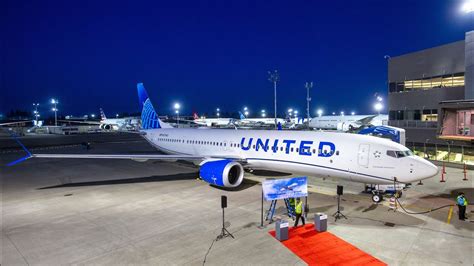The two contenders are Airbus and Boeing. The cards on the table are A330 and A350 against the 777 and 787. This segment is going to be the biggest twin aisle market for the foreseeable future. Both OEMs offer compelling economics along with competitive range/payloads. Airlines can select from the very best technologies in aerospace; the latest thinking, lightest materials and superb engine offerings.
So, who has the segment covered best?
online poll by Opinion Stage
Views: 1




First, with the 787-10 and 777-9, Boeing has no competition in the offing from the Airbus twins on either end of that class of the seating wars. Boeing goes higher and lower in 3C seats and arguably the Rev Per Seat Mile is higher from the Boeing products. Time will tell!
Related: The 747-8 was only meant to move profitability for the A380-800 out further and force EADS (then) to spend “tons o’ euros” in development: $18.350 Bn American for the A380-800 versus $4.138 Bn American for the stretch, new wing, and engine on the 747-8. Also, the new 747-8 engine and a major portion of the wing design was largely paid for by the 787-8/9 R&D.
Remember that when Boeing decided to bow out of the “all new jumbo” war, it said there wasn’t enough potential sales for 2 full-fledged new jumbos in the foreseeable timeframe: into the 2030’s.
Also remember the 80-8 wings were designed, for FUTURE efficiency: 80-10, with the much larger and initially wasteful wing until the -10 airframe MIGHT be needed. Very little interest for anything larger than the 80-8….Only EK has tossed it out there…unless you can bet on at least hundreds of order sureties, its not worth it.
Boeing is leaving that alone for 10-12 yrs for Y-3 or other future program with future Over The Wing twin engines to get the 2 engine efficiency, vs 3 or 4 engine with larger engines needed for Ultra Large future frames..i.e. Sonic Cruiser update or Flying Wing, etc.etc.
In the mid 2020’s that development will make all current designs seem not only obsolete but indeed actually antiquated. Neither Boeing or Airbus sees the need for it quite yet. Though Airbus super jumbo 80-10 is their current thought.That’s why we have 37MAX and 787 instead of the vaunted Yellowstone lines….YET. Again, this seems to again support Boeing’s Direct route direction.
Remember EADS and Boeing had fundamentally different views of the flight paradigms. EADS Hub view and Boeing Direct view. With almost “Any Two City pairs” being within reach even with something as relatively small as the 87-8, that takes away one of the two major reasons for Hub.
The other is cost per seat mile: loading. With fracking and other booming oil reserve opportunities taking hold, other renewable and Nuclear options gaining much greater following, and the crashing of the seemingly endless China growth, fuel costs will be a somewhat lessened issue at the very same time as much more efficient aircraft are coming online, i.e. 787/350, MAX/Neo. This seems to prove the Boeing case.
The noise reduction, quicker elevation of the 47-8 and 80-8 lessen the public outcry against existing airport expansion. Again lessening the “must haves” of the ever bigger aircraft capacity for the time being, such as for Asian cities, etc.
Saying the 77-10 will kill the 47-8 because of the approaching 3C capacities 407 to 467 (60 difference) would be no more valid that the 747-8 killing the 80-8, 467 to 525. (58 difference). The 50-10 probably wont kill the 77-10 350 to 407. (57).
One last thing. I can tell you that Boeing is dubious on the exact long term expansion in Middle East/Asian countries. Terrorism seems to know no end, and that will have a progressively negative impact on westerners continuing to visit new-fangled cities like Dubai and Abu Dhabi and many Islamic Indonesian area growth cities, etc. This would finish off the 380 business case. The 47-8 as well, but again Boeing purposely didnt put that much effort (read: cost) into the expansion of that aircraft. This was a major reason. Boeing has been spooked even since the 1993 WTC bombing.
All this said, both producers as well as Embraer ERJ/E and Bombardier CRJ/C produce fine products. The future Chinese Comac products will have a hard time breaking in for 1-2 decades except in China itself.
I’d love comment.
A lot depends on how you look at it, but for this moment in time, Boeing seems to be the winner.
However. As stated in other articles, much will depend on Airbus developing the A350-1100, and what specs it will have. If Airbus develops the A350-1100, Airbus will probably have a superior product compared to the 777x. If you compare the classic B777 with the A330, a lot of simularities can be seen. Both planes are very successfull, and have comparable age.
The 777x is essentally the A350classic approach, which Airbus came back upon due to low market acceptance.
Despite all the A330neo buzz, which never seems to stop, Airbus does not seem to take that approach again, even if the minds of airlines have changed a bit since then. On the other side, Airbus won’t sit by. The A330 is ageing, and a new design will be made in proper time. After the A320neo series has properly entered service, development resources can be directed to that cause. This would allow for an entry into service of a new product after the A330 becomes 27 to 30 ears old. There is also market demand for higher capacity at the lower end, just above the existing narrow bodies. So any new plane might take that demand into account, and might be more focused on mid-range, naturally providing a very competitive product to Boeing’s offering and spanning a high market share, targeting the same market the A330 was in fact desgned to serve in the first place. The modular design of the A350xwb might allow them to take cockpit and tail components right from those designs, as well as many other things, compressing desing time and de-risking the new project. This moment is just a snapshot in time. One moment Boeing wins, the other moment Airbus wins. Enjoy the game.